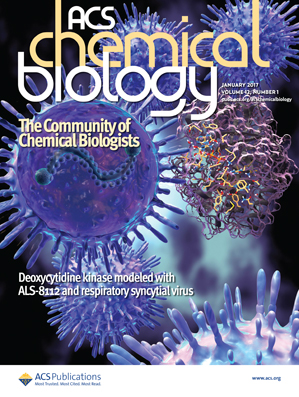Abstract P26: Altered RNA Export Sensitizes to Nuclear Export Inhibition in SF3B1 Mutant MDS
IF 3.5
2区 生物学
Q2 BIOCHEMISTRY & MOLECULAR BIOLOGY
引用次数: 0
Abstract
SF3B1 mutations, the most frequent spliceosomal alterations across cancers, occur in 25% of myelodysplastic syndromes (MDS) patients yet lack effective therapies. Two phase 2 clinical trials with the XPO1 inhibitors in high-risk MDS revealed increased activity in patients with SF3B1 mutations. XPO1 (Exportin-1) plays a role in the transport of multiple RNA species, including small nuclear RNAs (snRNAs) out of the nucleus. Given the role of XPO1 in exporting snRNAs, which form the catalytic portion of the spliceosome, we hypothesized that XPO1 inhibition may preferentially affect SF3B1-mutant cells and that SF3B1-mutant high-risk MDS patients would have a better response to rational targeted drug combinations with XPO1 inhibitors. To evaluate the mechanism underlying the preferential sensitivity of SF3B1-mutant cells to XPO1 inhibition, we conducted subcellular RNA sequencing before and after XPO1 inhibition in SF3B1 wildtype and mutant cells. Transcriptomic analysis revealed increased global retention of RNA transcripts and elevated snRNAs in the nucleus after XPO1 inhibition in the SF3B1 mutant cell line. Global RNA expression and splicing analysis revealed increased alternative splicing in SF3B1 mutant cells after XPO1 inhibition. These results suggest that the preferential sensitivity of SF3B1 mutant cells to nuclear export inhibition arises through increased nuclear retention of spliceosomal snRNAs and select mRNAs that results in perturbation of apoptotic pathways. Despite the promising efficacy of XPO1 inhibition in SF3B1-mutated MDS, dose escalation is limited by toxicity. In order to identify novel drug combination targets with lower XPO1 inhibitor doses, we employed whole genome CRISPR screens in two acute myeloid leukemia (AML) cell lines treated with XPO1 inhibitor. We identified two drug targets that greatly synergized with eltanexor specifically in the SF3B1 mutant cell lines: venetoclax (a BCL2 inhibitor), and A1331852 (a BCL-XL inhibitor). In addition, BH3 profiling demonstrated increased priming of the BCL2 and BCL-XL in SF3B1 mutant cells. We further validated these combinations in vivo using competitive transplant assays in Sf3b1 K700E conditional knock-in mice. The combination of eltanexor with venetoclax and eltanexor with A1331852 showed a significant decrease in the Sf3b1-mutant burden in the peripheral blood and bone marrow progenitor compartments, suggesting a preferential sensitivity of the combinations for SF3B1 mutant cells. Although A1331852 exhibited similar results to venetoclax, there was increased weight loss and decrease in hemoglobin associated with BCLXL inhibition. In conclusion, our study provides insight on the mechanisms underlying the heightened sensitivity of XPO1 inhibition in SF3B1-mutant MDS/AML. The identification of BCL2 and BCL-XL as synergistic targets with XPO1 inhibitors, validated by in vivo testing, BH3 profiling, and RNA sequencing, highlights the potential for therapeutic combinations. Specifically, the combination of eltanexor and venetoclax could be a promising SF3B1-specific therapy. Citation Format: Sana Chaudhry, Felipe Beckedorff, Shaista Shabbir Jasdanwala, Tulasigeri M Totiger, Maurizio Affer, Nidhi Hariramani, Olivia Tonini, Stephan Noudali, Alexandra Chirino, Alyssa Cornista, Skye Montoya, Daniel Bilbao, Jumana Afaghani, Jose Antonio Rodríguez, Shruti Bhatt, Eric Wang, Justin Taylor. Altered RNA Export Sensitizes to Nuclear Export Inhibition in SF3B1 Mutant MDS [abstract]. In: Proceedings of the Blood Cancer Discovery Symposium; 2024 Mar 4-6; Boston, MA. Philadelphia (PA): AACR; Blood Cancer Discov 2024;5(2_Suppl):Abstract nr P26.摘要P26:SF3B1突变型MDS中RNA输出的改变使核输出抑制变得敏感
SF3B1突变是癌症中最常见的剪接体改变,25%的骨髓增生异常综合征(MDS)患者会出现这种突变,但却缺乏有效的治疗方法。XPO1抑制剂在高风险MDS中的两项2期临床试验显示,SF3B1突变患者的活性增加。XPO1(Exportin-1)在将多种 RNA(包括小核 RNA(snRNA))转运出细胞核的过程中发挥作用。鉴于 XPO1 在导出 snRNA(形成剪接体的催化部分)中的作用,我们假设 XPO1 抑制可能会优先影响 SF3B1 突变细胞,SF3B1 突变的高风险 MDS 患者对 XPO1 抑制剂的合理靶向药物组合会有更好的反应。为了评估SF3B1突变细胞对XPO1抑制剂更敏感的机制,我们在SF3B1野生型和突变细胞中进行了XPO1抑制前后的亚细胞RNA测序。转录组分析表明,在SF3B1突变体细胞系中,XPO1抑制后,RNA转录本在细胞核中的全局保留增加,snRNA升高。全局 RNA 表达和剪接分析表明,在 XPO1 受抑制后,SF3B1 突变体细胞中的替代剪接增加。这些结果表明,SF3B1突变体细胞对核输出抑制的优先敏感性是通过剪接体snRNA和选择性mRNA的核保留增加而产生的,这导致了细胞凋亡途径的干扰。尽管抑制XPO1对SF3B1突变的MDS具有良好疗效,但剂量升级受到毒性的限制。为了在XPO1抑制剂剂量较低的情况下发现新的药物组合靶点,我们在用XPO1抑制剂治疗的两种急性髓性白血病(AML)细胞系中采用了全基因组CRISPR筛选。在 SF3B1 突变细胞系中,我们发现了两个能与 eltanexor 产生巨大协同作用的药物靶点:venetoclax(一种 BCL2 抑制剂)和 A1331852(一种 BCL-XL 抑制剂)。此外,BH3分析表明,在SF3B1突变细胞中,BCL2和BCL-XL的引物增加。我们通过在 Sf3b1 K700E 条件性基因敲入小鼠中进行竞争性移植试验,进一步在体内验证了这些组合。eltanexor与venetoclax的组合以及eltanexor与A1331852的组合显示,外周血和骨髓祖细胞中的Sf3b1突变负荷显著下降,这表明这些组合对SF3B1突变细胞具有优先敏感性。虽然A1331852的结果与venetoclax相似,但体重减轻和血红蛋白降低与BCLXL抑制有关。总之,我们的研究深入揭示了在SF3B1突变的MDS/AML中XPO1抑制的敏感性提高的机制。BCL2和BCL-XL被鉴定为与XPO1抑制剂协同作用的靶点,并通过体内测试、BH3图谱分析和RNA测序进行了验证,这凸显了联合治疗的潜力。具体来说,eltanexor和venetoclax的组合可能是一种很有前景的SF3B1特异性疗法。引用格式:Sana Chaudhry, Felipe Beckedorff, Shaista Shabbir Jasdanwala, Tulasigeri M Totiger, Maurizio Affer, Nidhi Hariramani, Olivia Tonini, Stephan Noudali, Alexandra Chirino, Alyssa Cornista, Skye Montoya, Daniel Bilbao, Jumana Afaghani, Jose Antonio Rodríguez, Shruti Bhatt, Eric Wang, Justin Taylor.SF3B1突变型MDS中改变的RNA输出对核输出抑制敏感[摘要]。In:血癌发现研讨会论文集;2024 年 3 月 4-6 日;马萨诸塞州波士顿。费城(宾夕法尼亚州):AACR; Blood Cancer Discov 2024;5(2_Suppl):Abstract nr P26.
本文章由计算机程序翻译,如有差异,请以英文原文为准。
求助全文
约1分钟内获得全文
求助全文
来源期刊

ACS Chemical Biology
生物-生化与分子生物学
CiteScore
7.50
自引率
5.00%
发文量
353
审稿时长
3.3 months
期刊介绍:
ACS Chemical Biology provides an international forum for the rapid communication of research that broadly embraces the interface between chemistry and biology.
The journal also serves as a forum to facilitate the communication between biologists and chemists that will translate into new research opportunities and discoveries. Results will be published in which molecular reasoning has been used to probe questions through in vitro investigations, cell biological methods, or organismic studies.
We welcome mechanistic studies on proteins, nucleic acids, sugars, lipids, and nonbiological polymers. The journal serves a large scientific community, exploring cellular function from both chemical and biological perspectives. It is understood that submitted work is based upon original results and has not been published previously.
 求助内容:
求助内容: 应助结果提醒方式:
应助结果提醒方式:


